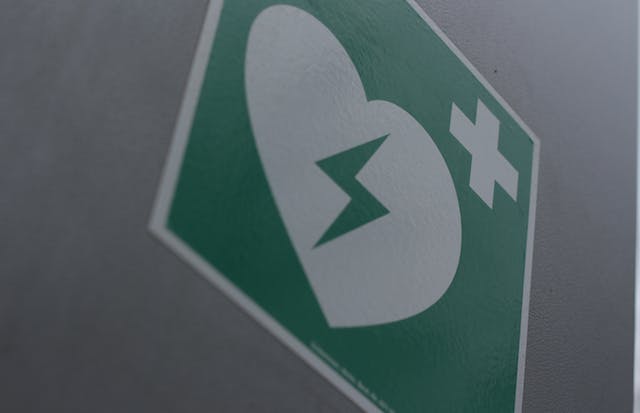Appointment Request
You can use this form to request an appointment.
Once received, we will check the form details and confirm appointment times with you.
We cannot guarantee an appointment without confirmation.
New Patient Registration
If you would like to register as a patient with YourGP, please fill in your details below and one of our team will be in touch.
Do you know how to use a defibrillator?

Defibrillators are devices that are quite literally life-saving. You may have spotted one at your workplace, leisure centre, or within your local community – but do you know when and how to use one? If not, it’s time to educate yourself. Because after all, what use is a life-saving device if you don’t have the confidence to use it in an emergency?
What is a defibrillator?
A defibrillator (also referred to as a ‘defib’, a public access defibrillator or PAD, or an automated external defibrillator or AED) is an advanced medical device designed to help someone suffering a cardiac arrest. It does so by administering a jolt of energy to the heart to help it start beating again.
Be prepared
When activated, defibrillators give clear step-by-step voice instructions. They also feature images to guide you through the various steps. That said, it’s a good idea to familiarise yourself with how to use one, so that you can have full confidence that you can use one safely and correctly in an emergency if required.
Signs and symptoms of a cardiac arrest
A defibrillator can save the life of someone suffering from a cardiac arrest. Before a cardiac arrest occurs, typical symptoms include tiredness, dizziness, feeling weak, shortness of breath and nausea. The person will then suddenly collapse and lose consciousness, they will have no pulse, and they will stop breathing.
What to do in an emergency
If you suspect someone is suffering from cardiac arrest, you must act quickly:
- Dial 999 immediately and request an ambulance
- While you wait for the ambulance to arrive, the operator will ask you to begin CPR
- The operator will tell you where your nearest defibrillator is located. If someone else is with you, ask them to get it.
The difference a defibrillator can make
A defibrillator is most effective when used within the first minute of someone collapsing. If used then, the survival rate can be as high as 90%.
If however, a defibrillator is not used until 3 – 5 minutes after the collapse, the likelihood of survival drops by 16%. This highlights what a huge difference being able to locate a defibrillator can make.
How to use a defibrillator
- Switch on the defibrillator by pressing the green button. Listen to the voice instructions.
- Remove the person’s clothing above the waist. Most defibrillator packs contain tools like scissors to assist you with this.
- Peel off the sticky pads and attach them to the person’s bare skin on each side of the chest.
- Once attached, do not touch the person. The defibrillator will then check the person’s heart rhythm.
- The defibrillator will tell you if a shock is required. If so, press the ‘shock’ button. Do not touch the person while they are being shocked.
- The defibrillator will tell you if you need to continue CPR.
- If the defibrillator tells you to continue to do CPR, continue with chest compressions until the person shows signs of life, or the defibrillator tells you to stop so it can analyse the heartbeat again.
Where is your nearest defibrillator?
If you would like the reassurance of knowing where your nearest defibrillator is, you can check this anytime via this helpful website – www.defibfinder.uk. Simply pop in your postcode and it will highlight your nearest devices, showing the full address and distance.
Just a massive thank you for being so willing to help us out. I was kept up to date in all email communication between the two clinics which I found very reassuring. I honestly can not emphasize enough how grateful we both are that the clinic was able to help us out with the Zita West fertility tests. We really did not know what we were going to do after the mix up with the blood collection dates due to the 4th of July in America and really thought we would have to give up on these tests so it means a massive amount to us that we have been able to proceed with them because of your willingness to help us out. Thank you again.
